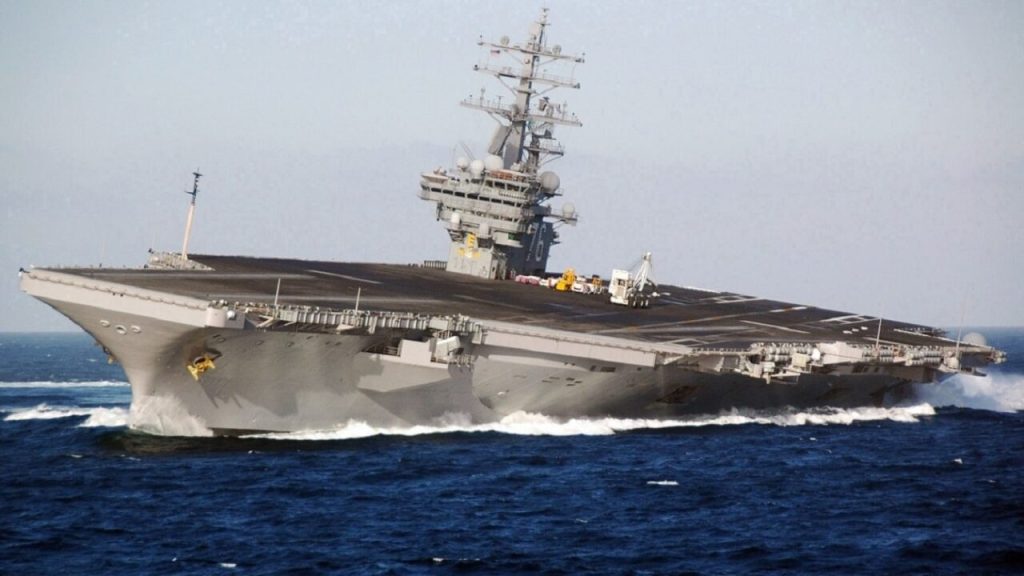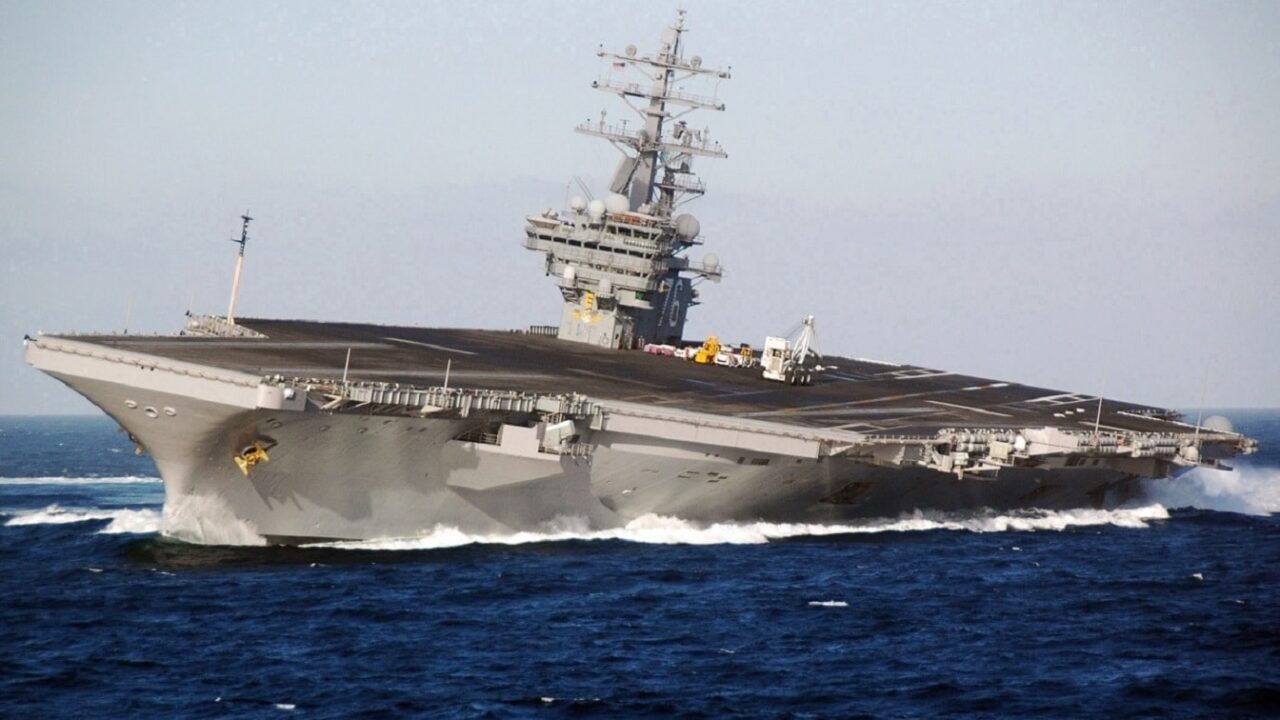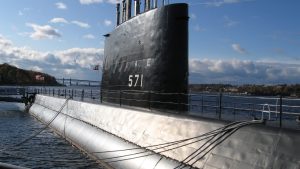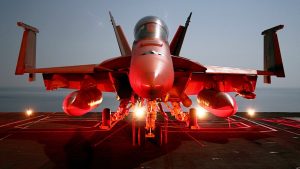The USS Akron became stranded in a storm while attempting to pass through New Jersey’s harbour. Seventy-three people, including Rear Admiral William Moffett, perished in the airship’s accident.

Image Credit: Creative Commons.
“The United States Navy researched helium-filled airships in the 1930s. These airships, built by Goodyear-Zeppelin, are known as the Akron class. The Navy’s Scouting Force relied on the two airships as platforms to expand their horizons and look further. A small squadron of aeroplanes was aboard the Akron to increase their scouting range and provide cover in case of danger.
The years following World War One, the Navy conducted tests with rigid airships. The United States was supposed to get a German airship as part of the reparations agreement with Germany after the war. But the German airship crew blew up their craft. The Germans made up for it by creating a new airship for the United States. During this time, the United States constructed its airship.
Many early airships flown in the 1920s could have been more successful. They both had a fatal collision. The United States hoped that the lessons learned from the airships would help them create a practical and effective design in the military realm, so they combined some of those ideas into a new concept. Two brand-new vessels, to be known as the Akron class, were ordered.
Goodyear, based in the United States, and Luftschiffbau Zeppelin, based in Germany, collaborated on the Akron-class airships. One of Goodyear’s most recognizable products today is the Goodyear blimp, frequently soaring above big sporting events. Because of their role in creating the Hindenburg, Zeppelin has become inextricably linked to the rigid airship design.
Zeppelin’s Chief Stress Engineer, Karl Arnstein, came to the United States to help with the Akron. To all appearances, Arnstein enjoyed his time in the United States because it allowed him to try new things without his German corporation’s conservative, stifling monitoring. Arnstein was a key contributor to the Goodyear crew, developing innovative building techniques, including the “Deep Rings” and the triple keel. Unlike traditional airship designs based on several unreinforced rings, Deep Rings consisted of just two primary rings, each composed of duralumin and joined together by supports. They thought the deep rings were more sturdy and reliable than regular rings because of their extra thickness. Triple keels were another innovation of Arnstein’s. Most airship designs have just had a single keel down the bottom of the craft. The new airships would include three triangle keels: two along the bottom and one along the top.
The aeroplane hangar was the most ground-breaking addition to the Akron airships. As many as five light aircraft would fit in the hangar. Aeroplanes were launched and retrieved using a “trapeze” system. Before taking off, I would fasten the plane to a “skyhook” in the hangar. The skyhook would then drop the plane from the hanger into the airflow. If the skyhook were to be removed, the plane could take off. When it came time to “land” the plane, we just did the opposite of how we took off. While the skyhook was attached, the plane would fly directly below the hangar. The skyhook would then bring the jet back into the hangar. A precursor to the bomber motherships that would launch smaller planes and experimental crafts in the following decades, the procedure was exceedingly innovative and ahead of its time.
Spy baskets are another ingenious addition to the Akron class. It was possible to lower a small aerodynamic gondola, called a “basket,” from the airship by way of a line. Although the main body of the airship remained concealed in the clouds, could carry out surveillance could be carried out through the basket.
The USS Akron was the first Akron-class airship completed (ZR-4). The USS Akron was an impressive naval vessel with 785 feet in length, 146 feet in height, and 132 feet in diameter. In terms of volume, the airship was 6.5 million cubic feet, and in terms of weight, it weighed in at 403,000 pounds. Incredibly, the USS Akron had a cargo capacity of 182,000 pounds. The USS Akron had a maximum speed of 84 miles per hour, a range of 10,580 miles, and was manned by a crew of 60. The airship’s design was optimal for the platform’s principal function, long-range reconnaissance and then modified the Akron class’s goal after launch.
Although Akron was designed as a scouting platform, it quickly became clear that it was highly susceptible to attack from the adversary. Changing the mission profile so that the Akrons would primarily serve as airborne aircraft carriers meant putting the airship in less danger on scouting missions. The Akron’s deployed aircraft would perform scouting.
The Akron class did not fare well in the military. After being christened by First Lady Lou Hoover in 1931, the USS Akron spent the next two years conducting normal training. The USS Akron was part of FDR’s inaugural procession in March 1933. The USS Akron was trapped in a storm off the coast of New Jersey in April, only a month later. Seventy-three individuals died in the airship catastrophe, including the head of the Bureau of Aeronautics, Rear Admiral William Moffett.
The USS Macon (ZR-5) was the second ship of the Akron class, and she fared even worse than her predecessor. The Macon was launched in 1933, a month before Moffett would perish on the Akron. His wife christened the ship. Both Akron and Macon retired after around two years of training. A severe storm in February 1935 prompted Macon to land in the ocean near Point Sur, California. The Macon had life vests and rafts after the lessons learned from the Akron accident. One crew member leapt from the ship at a fatal height, while the other swam back into the wreckage to rescue their possessions, both of which were fatal injuries. The Macon sank until it was 15,000 feet beneath the water’s surface. Divers cannot reach the wreck because of its location.






